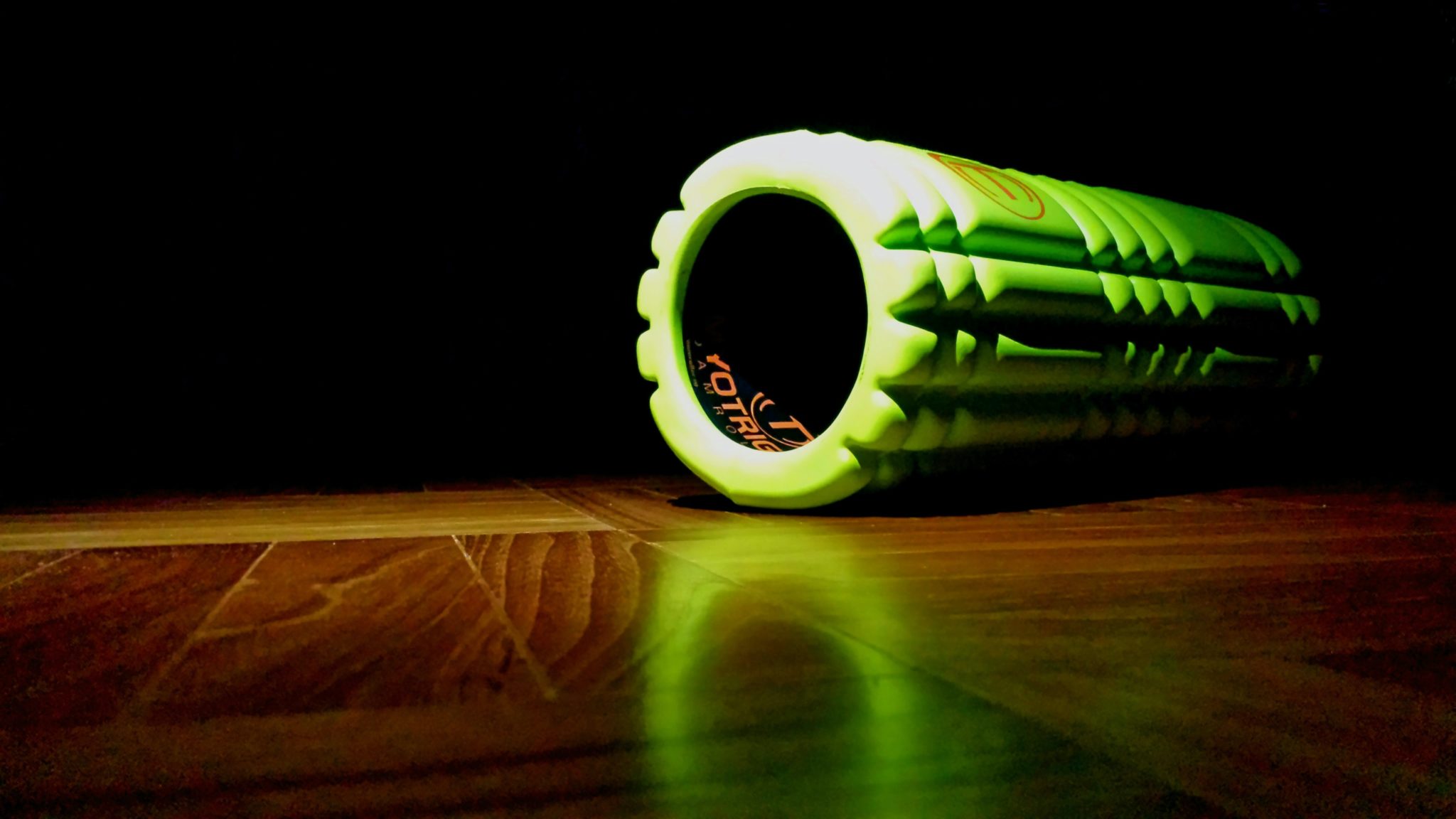What does foam rolling really do (and more importantly, not do)
Foam rolling. You’ve heard it’s great for releasing tight muscles, extinguishing DOM’s and eliminating aches & pains. So you spend precious time every week gritting your teeth and enduring the pain of steam rolling your sensitive muscles.
But is it actually doing you any good? Hate to break it to you but, probably not.
That’s not to say foam rolling is ineffective, but it’s the way most people are doing it that certainly is.
To learn how to foam roll effectively, it’s helpful to first understand what it actually does, and more importantly, what it doesn’t do.
What’s the goal of soft tissue therapy?
To understand what foam rolling does (and what it can and cannot do), it helps to understand the goal of soft tissue therapy, as that’s why the foam roller was invented in the first place, to administer soft tissue therapy to oneself (I call it self massage).
For the record, I am a qualified soft tissue therapist with several years of practice under my belt. I studied sport and remedial therapy, advanced neuromuscular therapy and functional range release – throwing this out there so you know this topic is within my wheelhouse.
The goal of soft tissue therapy is to help restore normal joint function. There are many methods, but they tend to be aimed at addressing two soft tissue dysfunctions that can arise: Neuromuscular tightness and mechanical tension.
Neuromuscular Tightness.
This is the name given to an area of tissue that is overly contracted / hypertonic (too much muscle tone). When you “feel tight” this is typically why.
Soft tissue therapy methods that address neuromuscular tightness aim to restore resting muscle tone. Trigger point therapy is one such method. This involves compressing tissue in a very specific spot at the right depth, holding that pressure and allowing time for the body to re-calibrate muscle tone to a more relaxed, normal state.
Mechanical Tension.
Mechanical tension speaks to an area of scar tissue / fibrosis (disorganized connective tissue). This is commonly a result of injury.
Soft tissue therapy methods that address mechanical tension aim to remove or ‘break up’ scar tissue / fibrosis to restore relative tissue motion.
Functional range release (FR®) is one such method. This technique in particular combines directionally specific compression combined with movement to influence tissue remodeling.
So what does foam rolling do?
Much like a therapist’s hands, the foam roller is an external force that is applied to the soft tissues in an attempt to influence change.
It’s important to appreciate at this point that a therapist has way more control over that force: the location, the direction, the depth, the type of contact. A foam roller is limited in what it can do.
If you’ve heard that foam rolling can ‘break up scar tissue,’ I’m sorry to disappoint you but that’s just flat out false information. The reality is, techniques like FR® that address mechanical tension can only be employed by very skilled therapists.
But all is not lost.
Neuromuscular tightness can be reduced by foam rolling. In much the same way as trigger point therapy, the roller can apply an external pressure into the tissues in a way that helps to recalibrate and restore resting muscle tone. Here’s how that can benefit you:
The benefits of foam rolling
> Increase range of motion at a joint.
> improve joint function.
< Reduce the sensation of tightness.
< Reduce the sensation of soreness.
< Reduce aches and pains (if neuromuscular tightness is the culprit)
All that said, these potential benefits are only possible if you know how to use a foam roller the right way – literally the opposite of how Joe Bloggs does it!
Let’s jump into that now.
How to use a foam roller CORRECTLY: 3 things to remember
- Keep the target muscle relaxed.
Tensed muscles are solid and act like a barrier that won’t allow the roller to sink deep into the tissues. It’s therefore important to position your body in a way that allows you to keep the target muscle relaxed. Use your limbs that are not in contact with the roller to support your weight and control the depth.
- Roll Slow.
When performing any soft tissue therapy technique, you are communicating with your body. It takes time for the roller to sink in and it takes time to scan an area for hypertonic muscles. Moving quickly up and down a muscle is therefore completely ineffective. You won’t find the tension and you won’t allow time for that communication with the brain which is necessary to resolve the tightness. Instead, allow several seconds for the roller to sink in, then proceed to move very slowly, scanning an area and paying close attention to the sensations that you feel.
- Breathe.
If you foam roll a sensitive muscle too quickly or too deeply, chances are you’ll tense up, grit your teeth and hold your breath. You might think your ability to handle the pain is necessary to make a difference, in actual fact, the opposite is true and it will lead to more tightness.
Control the depth so that the sensitivity / pain is no more than a 6/10 and maintain diaphragmatic breathing. Keep your mouth closed and breathe only through your nose. Slow, deep inhale for 3-4 seconds, slow steady exhale for 4-6 seconds. By consciously controlling your breathing in this way, you will tap into your parasympathetic nervous system, which will help to relax the muscles and let go of tension.
3 Foam Rolling Methods That Actually Work.
Trigger Point Release:
- Scan an area very slowly until you find a spot that’s especially tender.
- Control the depth so that it’s no more than a 6/10 on a pain scale.
- Maintain a constant pressure and breathe diaphragmatically until the pain reduces to a 2/3.
- This should take around 60 seconds.
NB: A ball (e.g massage ball / tennis ball) is even more effective for this method. It’s a smaller surface area and can therefore sink deeper. It will also enable you to target areas of tension with more accuracy.
Micro Stripping.
- Allow a few seconds for the roller to sink into the tissues to the desired depth.
- Use your non-working limbs to move your body over the roller 2-3 inches back and forth in the same direction as the muscle fibers.
- Repeat this action for several reps.
- Reposition your body and repeat.
Cross Fiber.
- Allow a few seconds for the roller to sink into the tissues to the desired depth.
- Use your non-working limbs to move your body over the roller 2-3 inches back and forth against the grain of the muscle fiber direction.
- Repeat this action for several reps.
- Reposition your body and repeat.
Finally, WHEN should you foam roll?
You shouldn’t need to foam roll very often. With good training and a movement rich lifestyle, muscles will function well and tightness shouldn’t arise. There are certain situations however, where a good foam roll can be beneficial and make you feel better:
- After prolonged sitting.
- As part of a warm up.
- If muscles feel particularly sore from a workout.
- As part of a mobility session.
In all the above circumstances, it behooves you to follow up the foam rolling with mobility exercises, otherwise, the results are temporary.
Dynamic stretching, joint circles, bodyweight movements that explore your joint’s ranges of motion will help to “lock in” the new movement so that it doesn’t revert back to its previous state. Movement is king when it comes to restoring muscle and joint function.
Wrapping Up.
There we have it. I hope this information was useful and I hope that you become more skilled at self massage as a result. Time to practice what you’ve learned and release those tight muscles 👌
Did you like this post? Follow me on Instagram for daily workout inspiration and tips and join my weekly Wednesday Wisdom newsletter where I dive deep into the latest topics to help you train smarter and live better. If you’re ready to train smart and want to train with me, you can choose from 3 programs: Download my app PRGRM here.




Great insight, thank you. I’m early sixties and appreciate your posts. The one on tight hips has helped me a lot….thought I had a low back issue! Best regards.
Hi, first of all thank you for sharing your work. It has been a crucial factor for me to understand how to treat my body WELL during this year’s pandemic and I’m very thankful for the work you do. This article on foam rolling is very interesting, gets me to understand things deeply. I am always keen to find new material on pectorals and their treatment, and I was wondering if foam rolling or similar mobility-relaxing techniques could be applied to pectorals and in general that chest upper body area. Thank you for reading this. Michele from Italy